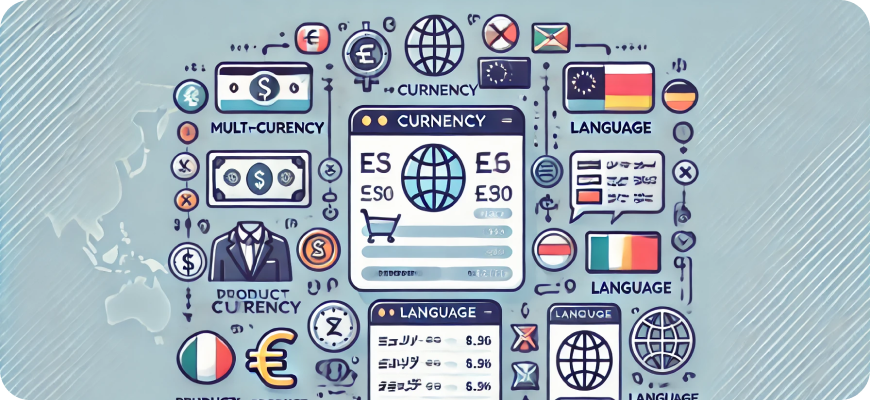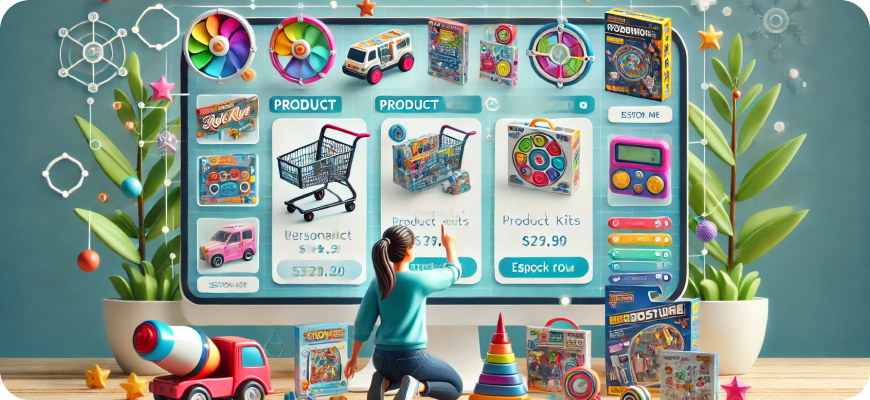Expand Your Ecommerce with Multi-Currency and Multi-Language Capabilities
In the global digital marketplace, eCommerce businesses are no longer limited to their home countries. The rise of technology and improved international shipping have enabled eCommerce brands to reach consumers all over the world. However, expanding into new markets comes with its own challenges—chief among them being the need to cater to diverse languages and currencies. Embracing multi-currency and multi-language capabilities can open up new growth opportunities, increase sales, and build customer loyalty across borders. Here’s how your business can benefit from, and implement, these essential features.

Why Multi-Currency and Multi-Language Capabilities Matter
1. Expanding Market Reach
To capture customers from different regions, speaking their language and accepting their preferred currency is crucial. When you cater to their preferences, you break down entry barriers, making it easier for international consumers to engage and convert.
2. Enhancing Customer Experience
By allowing customers to browse your eCommerce site in their preferred language and see prices in their native currency, you’re creating a seamless and personalized shopping experience. This leads to higher customer satisfaction, reduced cart abandonment rates, and increased loyalty.
3. Increasing Trust and Reducing Uncertainty
Consumers feel more confident purchasing from businesses that speak their language and list prices in their local currency. This removes any doubts about hidden conversion fees, foreign exchange fluctuations, and potential misunderstandings, creating trust in your brand.
4. Improving SEO for International Markets
When you optimize your site for multiple languages, you enhance your visibility in localized search engine results. This can drive more organic traffic and boost your brand’s international reach.
5. Gaining Competitive Advantage
Offering multi-currency and multi-language options gives you an edge over competitors who haven’t adapted to serve global markets. When customers see that you value their preferences, they’re more likely to choose your store over one that doesn’t provide the same level of convenience.
Implementing Multi-Currency Functionality
1. Use an International-Friendly Payment Gateway
To offer multiple currencies, you’ll need a payment gateway that supports global transactions and offers currency conversion. Leading providers like PayPal, Stripe, and Adyen enable you to handle various currencies, reducing friction for international buyers.
2. Display Localized Pricing
Customers prefer seeing product prices in their native currency without having to perform conversions. Implement currency converters on your site that automatically detect the user’s location (using IP addresses) and display the relevant currency.
Considerations for Multi-Currency Implementation:
- Real-Time Exchange Rates: Ensure that your prices reflect accurate exchange rates to maintain competitiveness and fairness.
- Transparent Conversion Costs: If there are any conversion fees, communicate these clearly to avoid surprise charges.
- Fixed Pricing Strategies: Some brands opt to fix prices for different markets, absorbing exchange rate fluctuations. This can enhance price stability and customer trust.
3. Adjust Checkout and Payment Options
Ensure that your checkout process supports the display of local currencies and allows customers to pay using their preferred methods. Different regions often have unique preferences; for example, some markets prioritize cash-on-delivery or local e-wallets over credit cards.
4. Handle Currency-Specific Taxation and Regulations
Selling in different markets means you may need to comply with local taxation rules, duties, and customs regulations. Automating your tax calculations and providing accurate invoices in local currencies is vital for compliance and maintaining customer satisfaction.
Implementing Multi-Language Capabilities
1. Choose a Multi-Language CMS or Platform
To offer content in multiple languages, you need a Content Management System (CMS) or eCommerce platform that supports language localization. Platforms like Shopify, WooCommerce, and Magento provide extensions and plugins for managing multi-language stores easily.
2. Translate Content Accurately
Language is more than words; it conveys culture and context. Relying solely on automated translation tools like Google Translate can lead to errors and potentially offend your audience. Instead, consider:
- Professional Translation Services: Invest in human translators familiar with your brand’s voice and local idioms.
- Localized Content Strategy: Adapt your content for each market. This could mean changing product descriptions, tailoring marketing messages, or aligning with regional cultural norms.
3. Optimize for Multi-Language SEO
To attract customers in different markets, you need to optimize for each language’s search terms and ensure your site’s structure supports multilingual SEO. Key practices include:
- Hreflang Tags: Use hreflang tags to indicate to search engines the language of each page.
- Localized Keywords: Conduct keyword research for each target language to ensure your content is relevant and optimized.
- Separate URL Structures: Options like subdirectories (e.g., example.com/es/) or subdomains (e.g., es.example.com) can be used to target specific languages or regions.
4. Localize the User Interface (UI)
Translating your content is not enough if the overall experience does not cater to the target audience. Localize elements such as:
- Navigation Menus
- Product Descriptions and Reviews
- Shipping Information
- Customer Support Chat and FAQs
5. Provide Multilingual Customer Support
Offering customer support in multiple languages adds a personal touch and ensures customers feel valued. Utilize multi-language support teams, translation services, or AI-powered chatbots capable of interacting in multiple languages.
Overcoming Challenges
1. Maintaining Consistency Across Markets
Consistency in messaging and branding across different markets can be challenging when you have multiple languages and currencies. Establish clear brand guidelines and workflows to ensure all translations and conversions align with your brand’s tone and style.
2. Handling Currency Fluctuations
Frequent changes in exchange rates can impact your pricing strategy and profits. To mitigate this, you can use hedging strategies, partner with payment processors offering stable exchange rates, or periodically adjust prices.
3. Managing Operational Complexity
Offering multi-currency and multi-language support introduces complexity to your operations, from managing inventory to processing returns and customer service. Consider partnering with third-party logistics (3PL) providers or using automation tools to streamline operations.
4. Legal and Compliance Issues
Expanding to new markets often means navigating different legal frameworks. Be aware of regulations related to taxes, consumer protection, and data privacy in each country you serve.
Best Practices for Success
1. Start Small and Scale Gradually
If you’re new to multi-currency and multi-language capabilities, start by focusing on one or two key international markets. Learn from these experiences before scaling to additional regions.
2. Use Data to Drive Localization
Leverage analytics tools to monitor how different markets respond to your localized strategies. Measure conversion rates, average order values, and customer feedback to identify areas for improvement.
3. Communicate Currency and Language Options Clearly
Make it easy for customers to change languages or currencies on your website through dropdown menus or pop-ups. Ensuring a user-friendly interface minimizes frustration and boosts engagement.
4. Monitor Competitor Strategies
Keep an eye on how competitors in each region approach localization. Adopting proven strategies or differentiating your offerings can give you a competitive edge.
5. Personalize the Experience
Beyond language and currency, consider personalizing the customer experience further. Show relevant promotions, recommend products based on regional trends, and tailor marketing campaigns to cultural events and holidays.
Real-Life Examples of Success
1. ASOS
ASOS, a global online fashion retailer, offers its site in multiple languages and currencies, with localized content tailored to regional tastes. This approach has allowed it to connect deeply with customers worldwide, leading to rapid international growth.
2. IKEA
IKEA provides a localized experience for customers in different countries by offering prices in local currencies and fully translated content that reflects the culture and needs of each market. This personalized approach reinforces customer trust and boosts sales.
3. Airbnb
Airbnb excels at providing a tailored experience, offering localized content and multi-currency options that enable hosts and guests to transact seamlessly across borders. Their focus on localization has been key to their success in diverse markets.

Conclusion
Expanding your eCommerce store through multi-currency and multi-language capabilities unlocks new growth potential by reaching diverse global markets. By prioritizing localized content, seamless currency transactions, and personalized experiences, you can build customer trust, reduce friction in the purchase process, and ultimately boost conversions and revenue.
While implementing these capabilities may present challenges, the payoff is well worth the effort. As the global eCommerce market continues to grow, being prepared to serve customers across cultures and currencies is no longer optional—it’s a strategic necessity for success. So, start optimizing your store for the world, one language and currency at a time.






